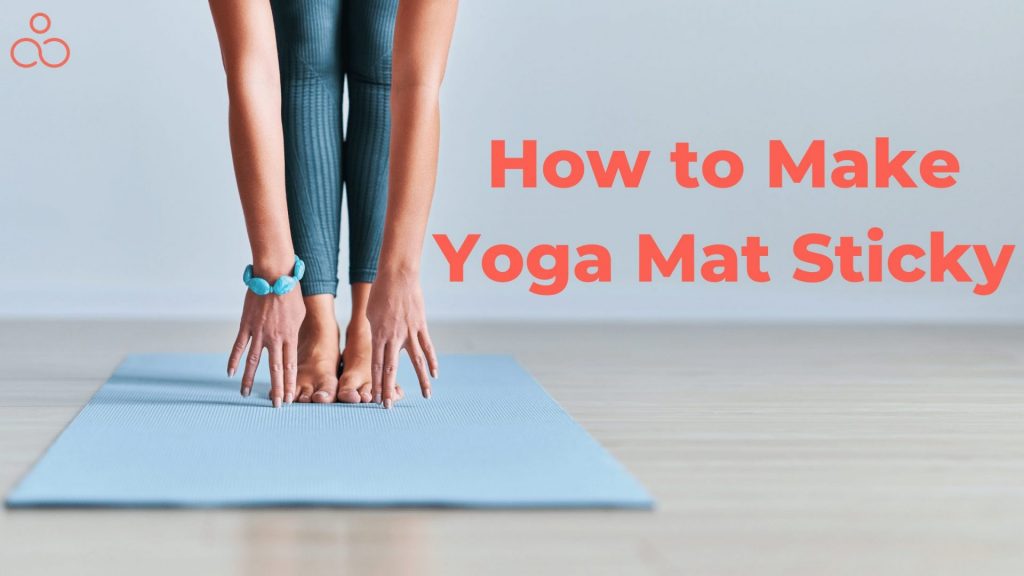Do you need help executing your yoga poses frequently or adequately lose your grip on a brand-new yoga mat? Are you curious to discover more about how to make yoga mat sticky again? And find out what the issue is & how to fix a slippery Lululemon yoga mat.
It’s always gratifying to unfold a completely new exercise mat for the first time. This sensation, however, might rapidly become unpleasant if you discover your glossy new yoga mat is quite slippery after a few postures. Don’t stress if this just occurred to you. Continue reading this article to discover why new mats may not be initially sticky and how to remedy a slick yoga mat.
Why Your Yoga Mat is Slippery & How to Make Yoga Mat Sticky Again?
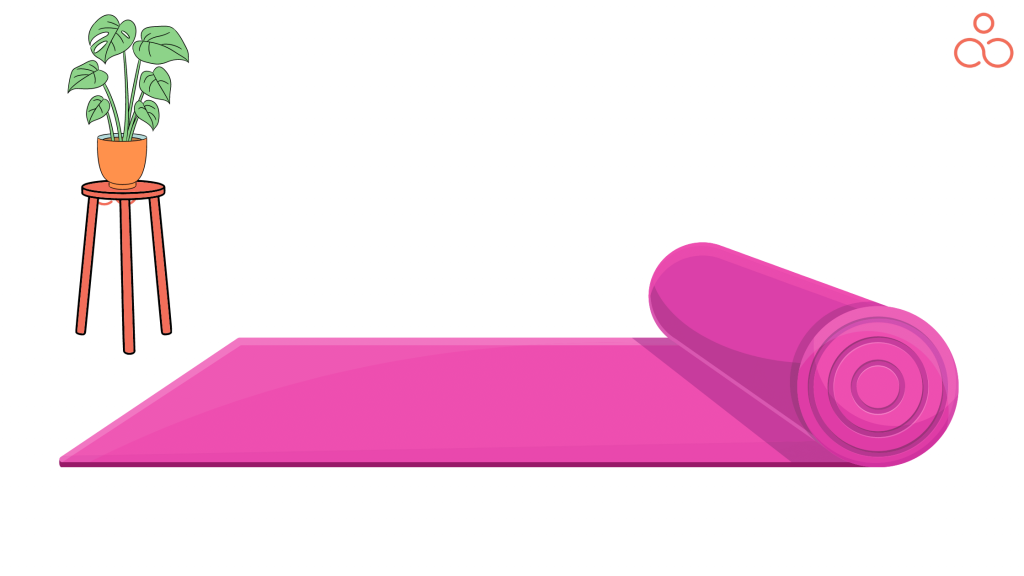
Knowing the root cause is necessary for problems to be solved. Furthermore, since you haven’t addressed the source of the fundamental problem, whatever remedy you take will likely be short-term. To know how to make your yoga mat sticky again, let’s find out what are some possible causes of a slippery yoga mat:
1. It’s necessary to break into a new mat
Most of the latest slippery yoga mats are formed of polyvinyl chloride (PVC). They tend to become stickier over time. However, they might be pretty slick initially.
2. Different mat materials have varying degrees of slipperiness
PVC mats often have higher initial traction than thermoplastic elastomer (TPE), rubber, and polyurethane mats. A key benefit of these mats is that they have excellent grip right away.
3. You keep slipping on the mat due to your body lotion or skin oil
Your preferred moisturizer is probably the reason for the slipperiness if you usually practice yoga straight after moisturizing your skin.
4. Your level of sweating makes the yoga mat slippery
Some people naturally perspire more than others. Or you’re practicing hot yoga in a room that’s 105 degrees Fahrenheit with 40% humidity. A moist mat can quickly become slippery.
5. Specific challenging postures make you slip off the mat
Some positions might require more work to implement. It could be more difficult to align correctly after taking a break and returning to yoga. In either case, if you leave a position, the mat can slide.
A Useful Guide On How To Make New Yoga Mat Sticky: 10 Essential Tips And Tricks
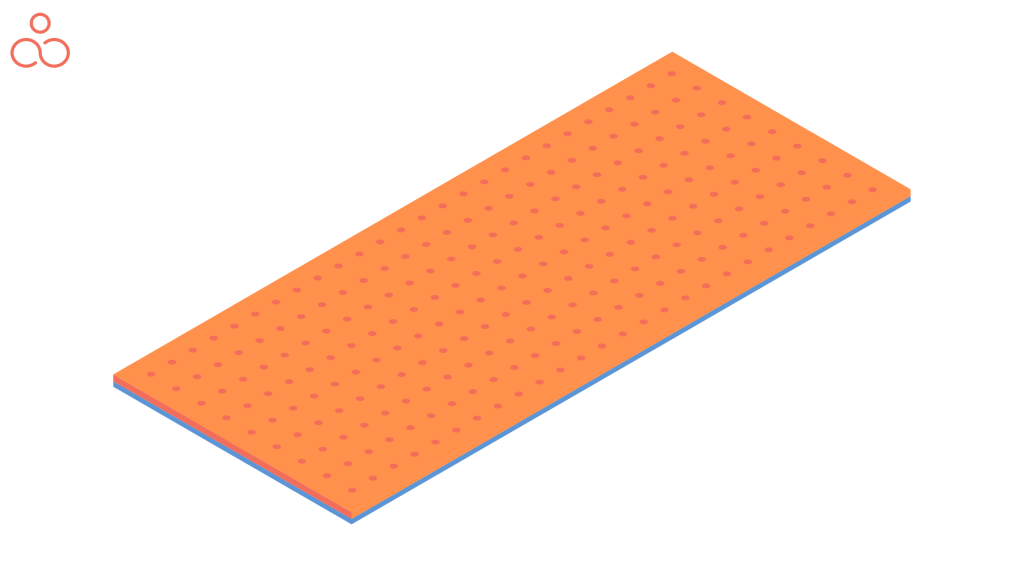
After purchasing one, finding out that your supposedly sticky yoga mat has little grip might be beyond a bit disheartening. Moreover, it might be infuriating if your mat slides about more than you’d want after using it for quite a while.
Thus, if your feet and hands are slipping all over your yoga mat and it isn’t as sticky as you’d like, don’t panic. You can implement an effective remedy once you determine what makes your mat slippery. During your practice, there are a few strategies to make it less slick and obtain more stability. So let’s not wait anymore and find out how to make a yoga mat more sticky.
1. Just Keep Practicing More & More
Increase your practice, which is the first and most famous advice for dealing with a non-sticky yoga mat. Your new exercise mat is likely composed of PVC materials, which are naturally quite slippery. The primary distinction between your brand-new, shining mat and the well-used one is clear: your mat requires a little bit of wear and tear. You must keep practicing until the surface layer disappears. Don’t give up; that occurs typically after two weeks of consistent practice. Before you realize it, your mat will soon develop a slip-free surface.
2. Dish Soap and Water
This is the simplest and most effective way to keep your yoga mat in top condition. And it’s likely you already have the items you need. All you need to do is mix a few drops of dish soap into a spray bottle of warm water. Be careful not to use too much soap – one or two drops are sufficient. Then, spray your mat and use a microfiber cloth to spread the soapy mixture over it.
Repeat this process for both sides, then rinse the mat with warm water. Finally, let it dry by laying it flat or hanging it in the shower.
3. Wash your Mat (the best way to make your yoga mat less slippery)
One of the most popular ways of making a slippery yoga mat less slippery is to put it in the washing machine. Alternatively, you can submerge it in cold water and leave it to dry in the air.
Important: Make sure not to squeeze or spin the mat, as this can damage the layers.
But how does water reduce slipperiness? Most yoga mats are made out of PVC, and adding water causes them to age and break in, much like using it over a period of time. Applying water to the mat is a simple and effective way of reducing its slipperiness.
4. Use a Towel
While exercising with a slick yoga mat, a towel may be helpful in a few different ways. A towel is your ideal alternative if you want to avoid the fuss with cleaning and drying your brand-new mat and would instead use it immediately.
Yoga towels provide traction since they are durable, non-slip material that efficiently absorbs and dries perspiration. Sweating might make a yoga mat more slippery if the materials aren’t as absorbent. Try covering your mat with a quick-drying microfiber towel or, even better, invest in a yoga-specific towel if a typical cotton towel isn’t absorbent enough or you notice that it increases slipping. Although it doesn’t have the same quick-drying properties as microfiber, a lightweight cotton beach towel could still be helpful.
Important: To prevent the towel from sliding across the mat’s surface, ensure it is tightly wrapped around it.
5. Apply Coarse Sea Salt
Another method to quicken the wear and tear on your mat and eliminate the slippery protective layer is to use an organic surface cleanser that contains coarse sea salt.
- Be cautious not to use sea salt excessively; the ideal mixture is one teaspoonful of salt to one cup of water in a bottle.
- Spray the mixture on the mat and let it sit for 12 to 24 hours. After that, wash it with regular water and let it completely dry before using.
6. Wear Gloves and Socks
Instead of using a towel, you may also wrap your new mat with socks and yoga gloves. These unique yoga accessories are created from a rubber material and have been designed to provide the same purpose as a yoga towel, i.e. to offer grip and reduce slipping. They can help with your perspiring-covered hands. A fantastic addition to your yoga kit!
Yoga straps are another valuable strategy to prevent slipping, as most poses are performed while standing on the mat.
7. Exercise on just one edge of the mat.
Make sure you practice on the same edge of the mat every time you begin your yoga sessions. To identify a training side, use the marker. A new mat can be compared to a new pair of running shoes. It could initially seem unpleasant, but after some time, you’ll feel excellent comfort and enjoy its perks. After some time, the training aspect will fade and be the perfect flooring for non-slip yoga.
8. Invest in a Double-Sided Yoga Mat
Purchasing a yoga mat with two sides is a brilliant idea. Typically, one side is manufactured from plastics like PVC, whereas the opposite includes a protective surface made of cotton or other similar fabrics. You should practice on the side with cotton or a similar material since it will keep any unwanted movement at bay.
9. Perfect Layering
Building a layer on your mat will help make it less slippery if the top layer makes it slippery. Simply spray a little water into the mat’s top layer, then place a quick-drying microfiber towel on the upper layer. Your practice will be much more comfortable thanks to this strategy, which will also assist you in minimizing slippery.
10. Use White Vinegar
White vinegar isn’t always advised since it’s acidic and might ruin the mat, but as long as you use it properly, you don’t need to be worried.
- The effective method to use this technique is to mix one cup of water with a 1/2 cup of white vinegar.
- Combine it, then apply it on the mat.
- You may add additional essential oils like eucalyptus or peppermint for a more pungent smell.
- Combine everything and spray the mat with the mixture. After a short time, wash the mat with water. That’s all there is to it.
11. Take a Shower Before the Session
After a workout, doing yoga postures while drenched in sweat is the last thing you should do. Cool off a little, shower, and then dry yourself up. Slipperiness can be significantly reduced by taking a shower before doing yoga.
Don’t miss out! Read these 6 ideas on how to store your yoga mat correctly.
Things to Avoid!
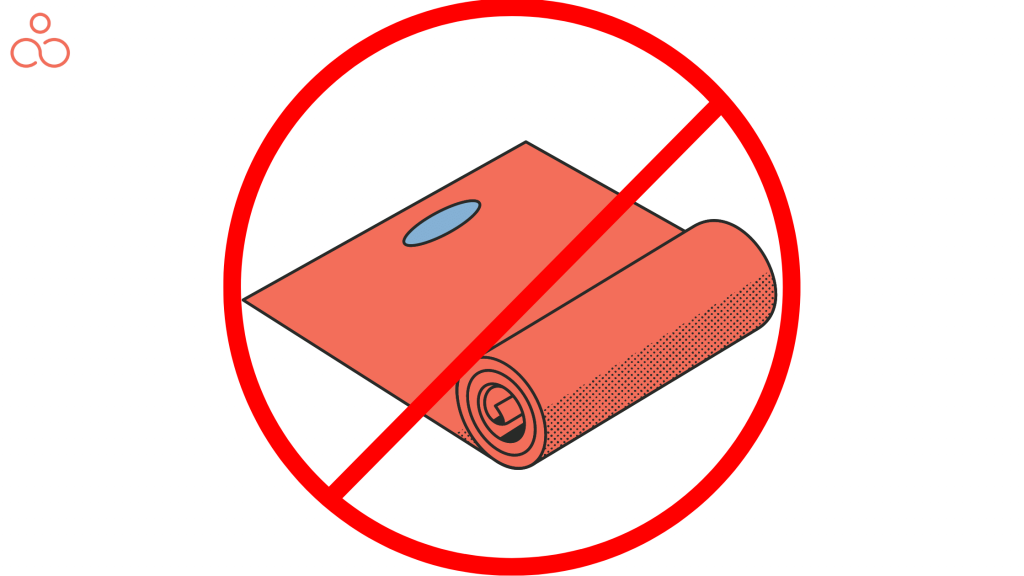
The risk of injury increases if your yoga mat is not slip-free. It is crucial to determine the cause of the problem so that you can come up with the finest remedy. Knowing what to avoid doing can assist you in avoiding unintentionally exacerbating the problem.
1. Do not use vinegar directly on your mat
Since apple cider/white vinegar is a strong acid, avoid using it to clean or treat your mat directly. Instead, you can combine apple cider/white vinegar or witch hazel with water at a 1-to-4 ratio in a spray bottle, and give it a shake to mix it up. (Add a few drops of tea tree oil or another essential oil to add a pleasant scent) Spray your mat down, then wipe the solution all over the surface. Make sure your mat is fully dried before you roll it up.
2. Avoid exposing the mat to excessive sunlight and sea salt
Both will damage PVC mats, rubber, TPE, and polyurethane.
3. Consult the manufacturer of the mat for any cleaning and maintenance guidelines
Contact the manufacturer for advice on how to make and maintain your mat’s stickiness during your yoga practice. The company is knowledgeable about how to use and care for their mat.
Natural and DIY Homemade Yoga Mat Cleaners
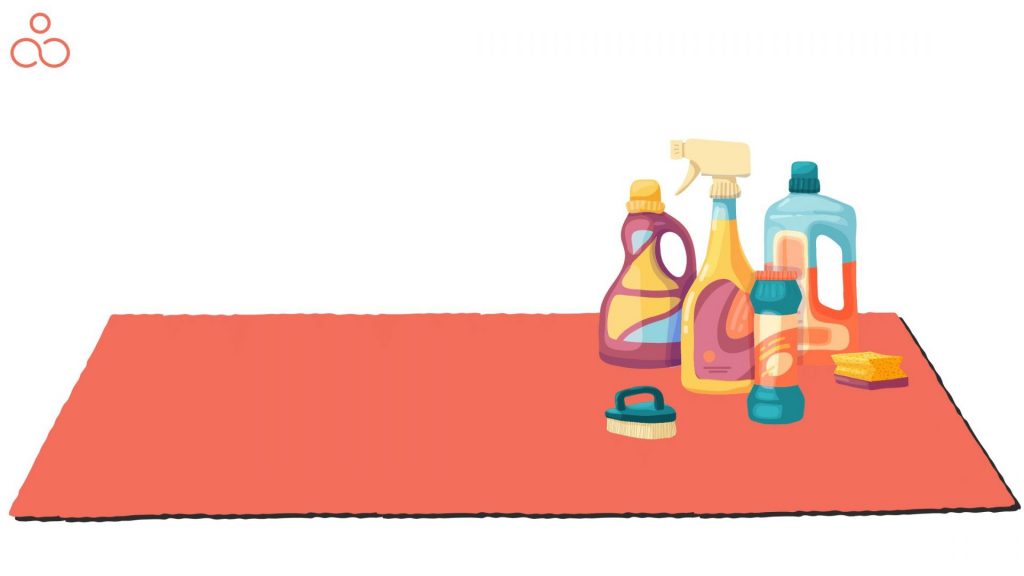
Homemade yoga mat cleaners are a great way to keep your mat clean and fresh without using harsh chemicals. There are many natural ingredients you can use to create your mat cleaners, such as vinegar, essential oils, and baking soda.
Here are some easy and natural DIY yoga mat cleaner recipes to get you started:
1. Vinegar and Water Cleaner
Mix water and vinegar in equal amounts in a spray bottle, then spray the solution onto your mat and wipe it down with a clean cloth. The vinegar helps to disinfect and deodorize the mat, leaving it clean and fresh.
2. Essential Oils Cleaner
When making a spray, three things are essential to consider:
- Cleaning agents
- Cleansing essential oils
- Aromatic essential oils
Cleaning agents come in a variety of forms, such as lemon juice, vinegar, and witch hazel — the choice is yours.
Essential oils should also be split into two categories: cleansing and aromatic. Cleansing oils will work to disinfect your mat, with tea tree and eucalyptus oil being popular choices. Aromatic oils, on the other hand, will keep your yoga mat smelling fresh – lemongrass, peppermint, and lavender are all good options.
Finally, water is an essential ingredient in any disinfecting spray recipe.
3. Baking Soda Cleaner
Mix 1/4 cup of baking soda with a couple of droplets of water to create a paste. Apply the paste to your mat and scrub gently with a soft brush or cloth. Rinse with water and let the mat air dry. The baking soda helps to remove any stains and odors from the mat.
Yoga Mat Material Options and Which Is Best for You

As a yogi, the type of yoga mat you choose greatly impacts your practice. There are several different mat materials on the market, each with its unique benefits.
Mentioned below are some of the most popular types of yoga mats and which may best suit your individual needs:
1. PVC Mats
These are the most common type of yoga mats and offer good traction and durability. However, they are not very eco-friendly and may contain harmful chemicals.
2. Rubber Mats
These mats are made from natural rubber and offer excellent grip and cushioning. They are also more eco-friendly than PVC mats. However, some people may be allergic to latex in natural rubber.
3. Cork Mats
Cork is a sustainable and eco-friendly material that is also naturally antimicrobial. Cork mats offer good grip and are ideal for hot yoga practices. However, mats like these may not provide the same level of durability as some other types and may also lack the same amount of cushioning.
4. Jute Mats
Jute is a natural fiber that is both eco-friendly and biodegradable. Jute mats offer a good grip and are lightweight and easy to carry. However, they may not provide enough cushioning for some practitioners.
Ultimately, the best mat material for you will depend on your individual needs and preferences. Consider the type of yoga you practice, your level of experience, and any environmental concerns when choosing your mat.
FAQ’s
How to make my yoga mat sticky again?
To know how to make a yoga mat sticky again, you can try a few different methods.
- One option is to use a yoga mat cleaner or grip spray specifically designed for this purpose.
- Another option is to sprinkle a light layer of sea salt over the surface of the mat and then use a damp cloth to rub it in.
- Additionally, you could also try using a mixture of vinegar and water to clean the mat and restore its stickiness.
How Often Should I Replace My Yoga Mat?
Generally, it is recommended to replace your mat every 6-12 months or when it starts to show any signs of wear & tear, such as thinning, cracking, or losing its grip. It’s important to replace your mat to ensure safety and comfort during your practice.
How to make Lululemon yoga mat sticky?
- To make your Lululemon yoga mat sticky again, try cleaning it with a solution of white vinegar and water.
- Then, sprinkle some sea salt or baking soda onto the mat and rub it in with a damp cloth.
- Let the mat air dry.
This should help to restore its grip and make it sticky again.
Conclusion
For some last thoughts on how to make your yoga mat sticky. Although it might be annoying, a slippery yoga mat need not be a deal-breaker. With the correct advice and techniques, you can ensure that your yoga practice is safe and enjoyable. Investing in a non-slip yoga mat is the best way to ensure you get the most out of your yoga practice. Not only will it provide you with a secure and comfortable surface to practice on, but it will also help you to stay focused and motivated. With the right mat, you can enjoy the many benefits of yoga without the worry of slipping and sliding.
Don’t let your slippery mat stop you from practicing your yoga positions; follow the above instructions to do some safe, slip-free, and worry-free wellness workouts.

